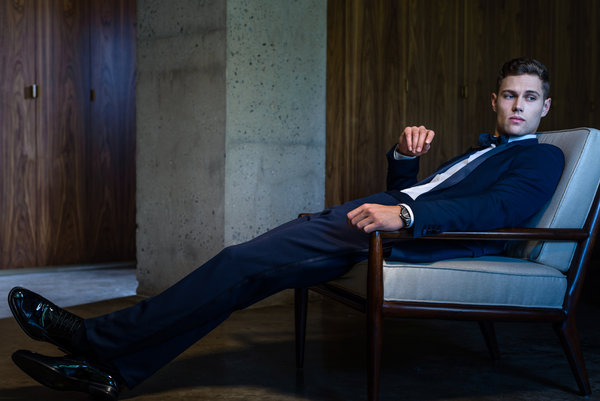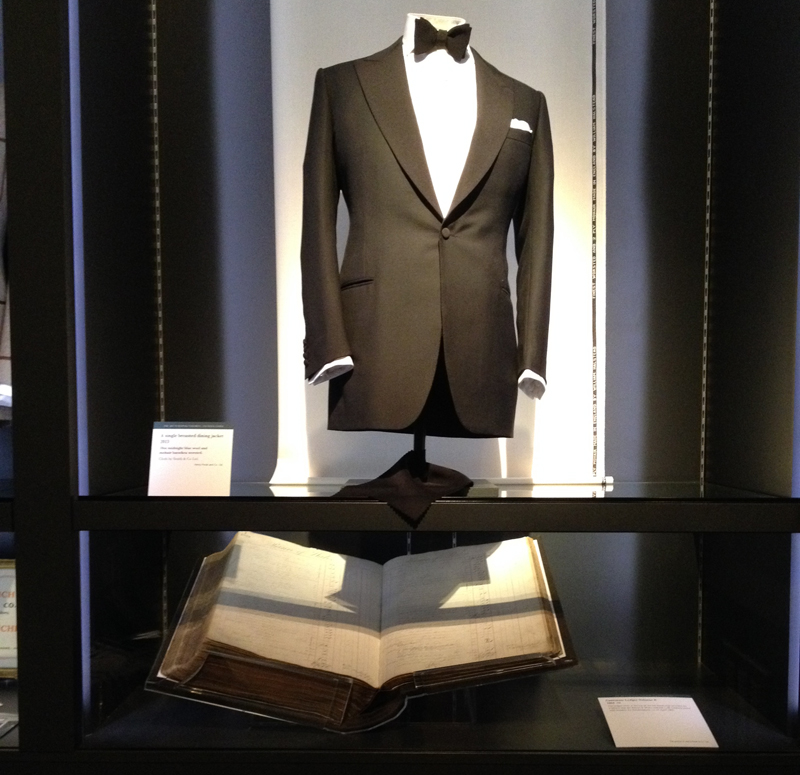 Personally, I found the NYTime’s article “For Tuxedos, Blue is the New Black” to be missing its own point. It did mention a little-known fact about the history of the tuxedo, that of American James Brown Potter dining with the Prince of Wales in 1886, (who was busy flirting with Potter’s wife) – but neglected to mention that the Prince had first had this tail-less dinner jacket made by his tailor Henry Poole & Co much earlier, in 1868:
Personally, I found the NYTime’s article “For Tuxedos, Blue is the New Black” to be missing its own point. It did mention a little-known fact about the history of the tuxedo, that of American James Brown Potter dining with the Prince of Wales in 1886, (who was busy flirting with Potter’s wife) – but neglected to mention that the Prince had first had this tail-less dinner jacket made by his tailor Henry Poole & Co much earlier, in 1868:

Henry Poole & Co. tuxedo, above the ledger where the tailor first records a tail-less dinner jacket for the Prince of Wales.
But more than that, the article only focused on the history of the tuxedo, and completely neglected to mention the history of blue tuxedos, which is at least as interesting:
One other minor bone to pick, it mentions that tuxedo jackets are called “dinner jackets” by “fancy folks” – which may be true if what the New York Times means is “British people.” Because the term “tuxedo” did develop from the Tuxedo Park Club in New Jersey, it began (and remains) a specifically American term for this garment, which is more traditionally called a dinner jacket in Britain, as well as “le smoking” in France, Sweden, and other continental countries.
Thanks to the Metropolitan Museum’s Costume Gala earlier this month, more articles have been cropping up about men’s formalwear, and I for one am glad of it. Looking at formalwear is the best way to examine the male practice of wearing a “uniform,” for either military or civilian dress, and whether you’re a believer in sticking to the rules or wanting to demolish them, I think the most interesting part is that we have those rules in the first place.